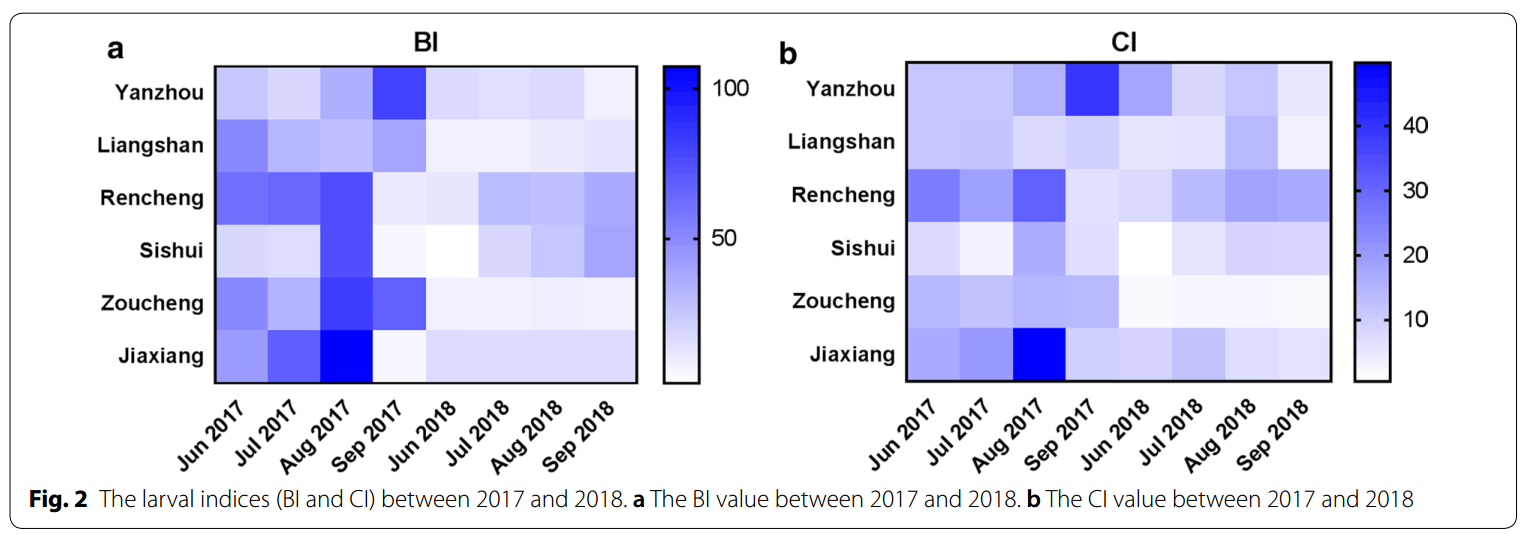Jielin Deng#, Yijia Guo#, Xinghua Su, Shuang Liu, Wenqiang Yang, Yang Wu, Kun Wu, Guiyun Yan, Xiao-Guang Chen*
ABSTRACT
Background: Dengue fever outbreaks tend to spread northward in China, and Jining is the northernmost region where local dengue fever cases have been detected. Therefore, it is important to investigate the density of Aedes albopictus and its resistance to deltamethrin.
Methods: The Breteau index (BI) and container index (CI) were calculated to assess the larval density of Ae. albopictus and human-baited double net trap (HDN) surveillance was performed in six subordinate counties (Rencheng, Yanzhou, Sishui, Liangshan, Zoucheng and Jiaxiang) of Jining City in 2017 and 2018. The resistance of Ae. albopictus adults to deltamethrin was evaluated using the World Health Organization (WHO) standard resistance bioassay. The mutations at Vgsc codons 1532 and 1534 were also analysed to determine the association between kdr mutations and phenotypic resistance in adult mosquitoes.
Results: The average BI, CI and biting rate at Jining were 45.30, 16.02 and 1.97 (female /man/hour) in 2017 and 15.95, 7.86 and 0.59 f/m/h in 2018, respectively. In August 26, 2017, when the first dengue fever case was diagnosed, the BI at Qianli village in Jiaxiang County was 107.27. The application of prevention and control measures by the government sharply decreased the BI to a value of 4.95 in September 3, 2017. The mortality of field-collected Ae. albopictus females from Jiaxiang was 41.98%. I1532T, F1534L and F1534S mutations were found in domain III of the Vgsc gene. This study provides the first demonstration that both I1532T and F1534S mutations are positively correlated with the deltamethrin-resistant phenotype.
Conclusions: Mosquito density surveillance, resistance monitoring and risk assessment should be strengthened in areas at risk for dengue to ensure the sustainable control of Ae. albopictus and thus the prevention and control of dengue transmission.
Keywords: Aedes albopictus; BI; Dengue fever; Surveillance; kdr.
Parasit Vectors. 2020 Jan 9;13(1):11.
DOI : https://doi.org/ 10.1186/s13071-020-3880-2

